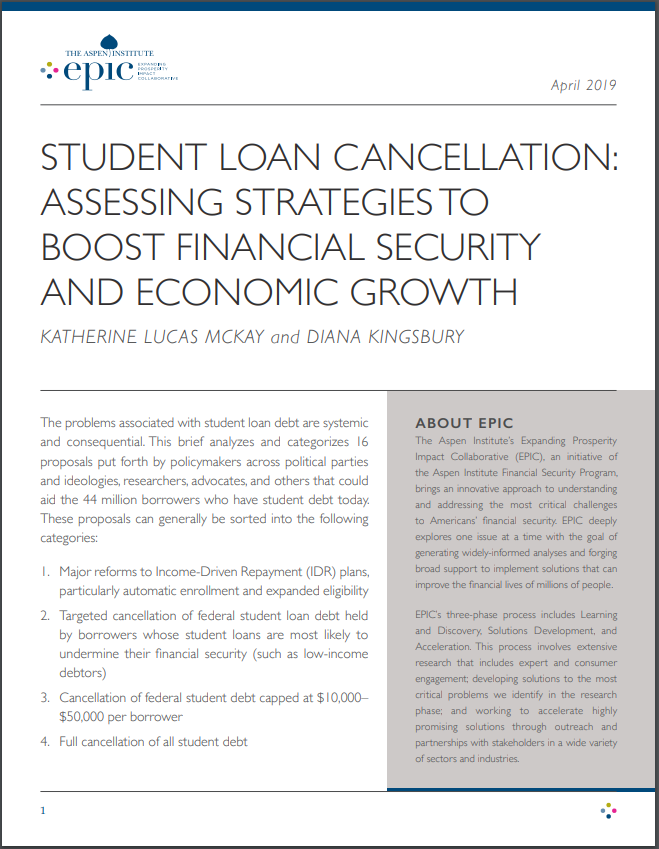Federal policy reforms to forgive or cancel outstanding student loan debt have become a hot topic of debate among advocates, researchers, and policymakers – including from 2020 presidential candidates – but have not previously been the subject of an independent analysis until now.
While borrowing to attend college is often an economically sound decision, the high cost of higher education frequently makes it a necessity, not a choice. These loans come with heavy costs: even among those who are current on their payments, student loan debt contributes to higher stress, poorer health, lower savings, higher likelihood of carrying other forms of debt, and reduced ability to become homeowners or start businesses.
Federal student loan debt has reached record levels:![]()
- 44 million borrowers owe $1.5 trillion, with a median balance of $19,000
- Between 2000 and 2016, aggregate student debt increased by more than 300% while the number of borrowers has only risen by about 28%.
- 1 in 10 student loans are in default.
- As many as 4 in 10 of today’s borrowers could default at some point on their federal loans by 2023.
The problems associated with student loan debt are systemic and consequential—but also solvable. EPIC’s Consumer Debt Solutions Framework (Lifting the Weight) identified several solutions that leaders across sectors can implement to reduce the burden of record student loan debt on families and the economy. Some solutions focus on the nature of higher education financing itself, considering options to expand state funding, lower costs, and prevent current levels of borrowing in the future. This first-of-its-kind brief, on the other hand, focuses on debt relief proposals that would aid the 44 million borrowers who have student debt today. The brief analyzes and categorizes 16 proposals put forth by policymakers across political parties and ideologies, researchers, advocates, and others. These proposals vary widely, from narrowly targeted reforms of federal repayment plans to total cancellation of all $1.5 trillion of outstanding federal student loan debt and $119 billion of private student loan debt.
Both sides of the issue must be addressed, ideally in concert, to solve the problem for today’s debtors, tomorrow’s college students, and the communities and economies that rely on or are impacted by them.



